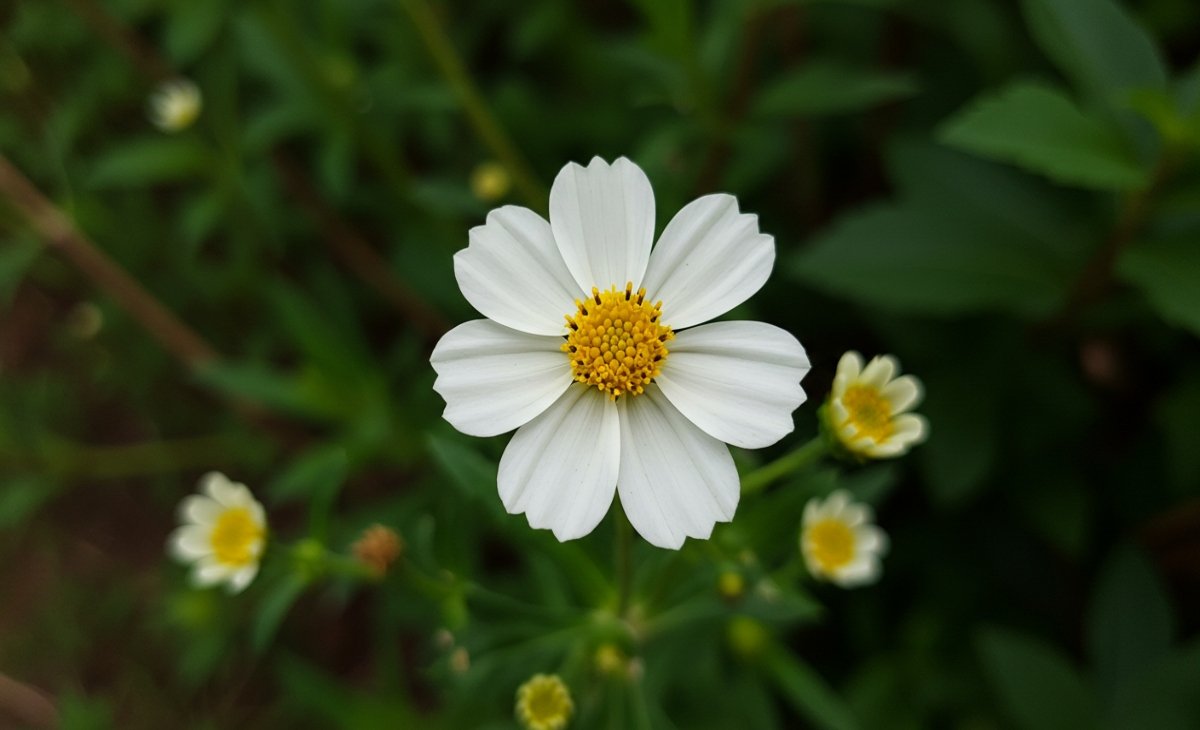The world of flowers is vast and rich with symbolism, fragrance, and beauty, but few blooms capture the delicate allure of the nargis flower. Known for its striking white petals and golden trumpet-shaped center, this flower is admired in various cultures, often symbolizing purity, renewal, and beauty. The nargis flower is not only appreciated for its physical charm but also for the emotional and poetic sentiments it evokes. From gardens to poetry and traditional medicine, the nargis flower has gracefully bloomed through centuries of human admiration and care.
As part of the Narcissus family, this flower is often associated with myth, legend, and art. Whether found in a rural field or carefully arranged in a decorative bouquet, the nargis flower continues to inspire and enchant people of all backgrounds. Its presence in different climates and societies highlights its adaptability and the universal appeal of its visual and aromatic qualities.
The Botanical Identity of the Nargis Flower
Scientifically belonging to the Narcissus genus, the nargis flower is a bulbous plant known for its early spring bloom. It generally thrives in temperate climates and is popular in many regions of Europe, Asia, and the Middle East. The flower typically has six white outer petals surrounding a small, trumpet-like corona that ranges in color from yellow to orange.
This flower prefers well-drained soil and moderate sunlight, making it ideal for home gardeners and landscapers who seek low-maintenance, high-impact flora. Due to its bulbous nature, it can remain dormant underground during colder months and bloom beautifully when conditions are right. This seasonal behavior is part of what gives the nargis flower its reputation for rebirth and hope.
You Might Also Like: Dracula Simia Orchid
Symbolism and Cultural Significance
Over time, the nargis flower has gained symbolic meanings that differ from culture to culture. In Persian literature, it often represents unrequited love, owing to its slightly downward-tilted head, which suggests a lover too shy to meet another’s gaze. This motif has been carried into Urdu poetry, where poets have drawn inspiration from the flower’s demeanor and appearance.
In many Eastern traditions, the flower signifies purity and renewal, aligning with its springtime bloom. In the West, it often symbolizes rebirth and the arrival of new beginnings, especially since it is one of the first flowers to bloom after winter. This duality of meanings across different societies adds depth to the nargis flower’s identity and cements its place as a globally cherished blossom.
Nargis Flower in Literature and Poetry
The influence of the nargis flower in literature, especially in classical Persian and Urdu poetry, is profound. Poets like Mirza Ghalib and Allama Iqbal have referenced it as a symbol of beauty that is both admired and unattainable. Its physical features are often used metaphorically to describe eyes, particularly those that captivate and enchant.
In English poetry, while the term “narcissus” is more commonly used, the essence of the nargis flower remains. William Wordsworth’s famous lines about daffodils, a close cousin of the nargis, evoke similar feelings of joy and peace. Across languages and literary traditions, the flower serves as a bridge between emotional states and nature’s quiet wisdom.
Aromatic Appeal and Use in Perfumes
One cannot speak of the nargis flower without mentioning its gentle, intoxicating fragrance. The scent is sweet, floral, and slightly spicy, making it a favorite in the perfume industry. Essential oils extracted from the flower are highly valued for their long-lasting aroma and therapeutic qualities.
High-end fragrances often include nargis flower essence as a middle or base note, blending harmoniously with rose, sandalwood, and musk. Its ability to evoke calmness and emotional balance makes it a key component in aromatherapy and luxury skincare products as well. The fragrance doesn’t just please the senses—it heals, soothes, and rejuvenates.
Medicinal and Herbal Applications
Beyond its ornamental and aromatic uses, the nargis flower has held a place in traditional medicine for centuries. In Ayurveda and Unani systems of healing, extracts from the flower are believed to have anti-inflammatory and analgesic properties. Ancient practitioners used it to treat headaches, fevers, and even nervous disorders.
However, it’s important to note that not all parts of the flower are safe for consumption. In some cases, the plant can be toxic if improperly used. Therefore, medicinal use should always be guided by expert knowledge and care. Despite these caveats, the nargis flower remains an intriguing specimen in the world of natural healing.
Gardening with the Nargis Flower
Home gardeners often choose the nargis flower for its low maintenance and high aesthetic value. It grows well in both containers and open soil, making it versatile for various landscaping needs. Planting typically begins in late autumn, allowing the bulbs to develop over winter and burst into bloom by spring.
Its upright stems and symmetrical petals make it a perfect addition to structured gardens, while its delicate fragrance adds a sensory layer to the visual experience. Whether arranged in rows or sprinkled throughout a mixed flower bed, the nargis flower enhances any garden with its refined elegance.
Environmental and Ecological Role
In its natural habitats, the nargis flower plays a beneficial role in local ecosystems. It attracts pollinators like bees and butterflies, which contribute to biodiversity and plant health. As one of the early bloomers, it provides a much-needed nectar source at the beginning of the season when food for insects is still scarce.
Moreover, the bulbs improve soil health over time by contributing organic matter. They also help in erosion control, particularly on slopes and uneven terrains. Thus, the nargis flower is not only beautiful but environmentally valuable as well.
Nargis Flower in Art and Architecture
Artistic representations of the nargis flower span centuries and continents. It has been a favored motif in miniature paintings, Persian carpets, and architectural ornamentation. The flower’s symmetry and color contrast make it ideal for visual stylization in traditional art forms.
In Mughal architecture, floral patterns often include the nargis flower as a central theme, adorning everything from wall tiles to marble carvings. These depictions aren’t mere decorations—they signify spiritual concepts, the ephemeral nature of life, and the enduring beauty of creation.
Preserving the Legacy of Nargis
With urbanization and environmental degradation threatening many plant species, efforts to preserve the nargis flower are gaining momentum. Botanical gardens and conservation programs around the world are focusing on seed banks and habitat protection to ensure the species thrives for generations to come.
Education also plays a crucial role. Workshops, school programs, and garden tours dedicated to plant awareness often highlight the nargis flower as an example of ecological and cultural preservation. Keeping this flower alive in public consciousness is as important as cultivating it in soil.
Commercial Farming and Economic Impact
The economic potential of the nargis flower is substantial. Countries with suitable climates have started to explore commercial cultivation, not only for the floral market but also for essential oil production. These initiatives provide employment, support local economies, and contribute to sustainable agricultural practices.
Markets in Europe, the Middle East, and Asia have shown increasing demand for nargis flower products, from fresh bouquets to dried petals and oil infusions. As the demand grows, so does the importance of ethical farming practices to maintain quality and sustainability.
Educational and Botanical Importance
The nargis flower holds significant value in academic and botanical studies. Researchers examine it for its resilience, seasonal bloom patterns, and potential genetic variations. Universities often include it in botany courses to demonstrate the anatomy and life cycle of bulbous plants.
Its relatively simple structure allows students to understand key concepts in plant biology, while its broader cultural and commercial implications offer interdisciplinary insights. From science to sociology, the nargis flower proves to be a subject worthy of exploration.
Seasonal Popularity and Festive Use
The seasonal charm of the nargis flower makes it a popular choice for spring festivals, weddings, and religious ceremonies. In many cultures, it symbolizes the renewal of life and is used in rituals that mark the beginning of the agricultural year or spiritual cleansing.
Bridal bouquets often feature this flower, reflecting the purity and hope associated with new unions. Its neutral color palette blends beautifully with various floral arrangements, enhancing both traditional and modern event aesthetics.
Contemporary Popularity in Digital Media
In today’s age of visual storytelling, the nargis flower finds new life on digital platforms. From Instagram photography to gardening blogs, its image circulates widely, garnering admiration from audiences worldwide. Influencers, florists, and environmental activists use the flower’s appeal to promote sustainable lifestyles and natural beauty.
Moreover, digital illustrators incorporate its likeness in wallpapers, design templates, and social media branding. This digital visibility ensures that the flower remains a part of modern aesthetic discourse, even as it continues to bloom in physical gardens.
Conclusion: A Bloom That Transcends Time
The nargis flower is far more than a seasonal bloom. It is a symbol, a muse, a remedy, and a friend to those who value elegance, resilience, and meaning in nature. From ancient poetry to modern botany, from sacred rituals to scientific study, the nargis flower has left its mark across disciplines and cultures.
Its continued relevance reminds us of the timelessness of natural beauty and the importance of preserving it. Whether you see it in a garden, read about it in literature, or smell it in a luxury fragrance, the nargis flower whispers stories of grace, renewal, and lasting impact.








